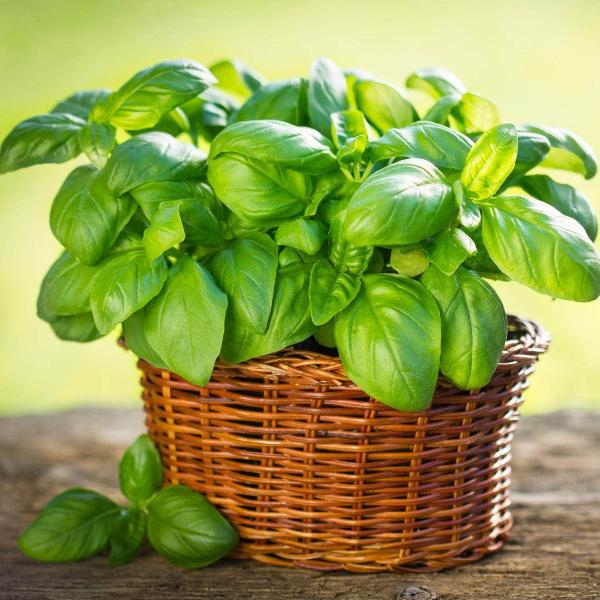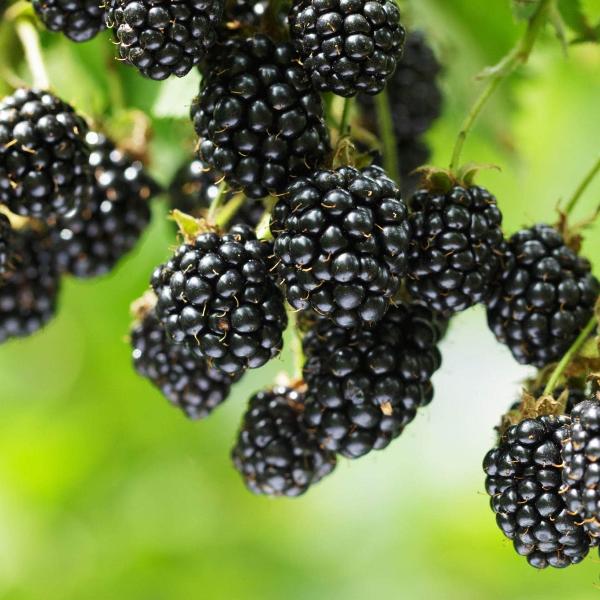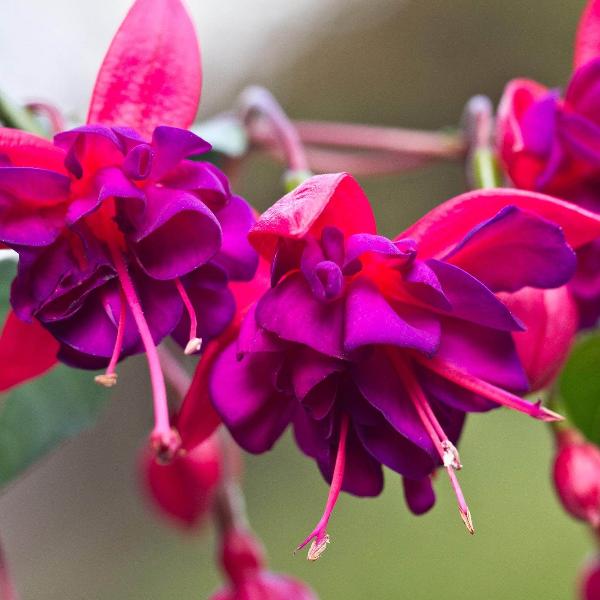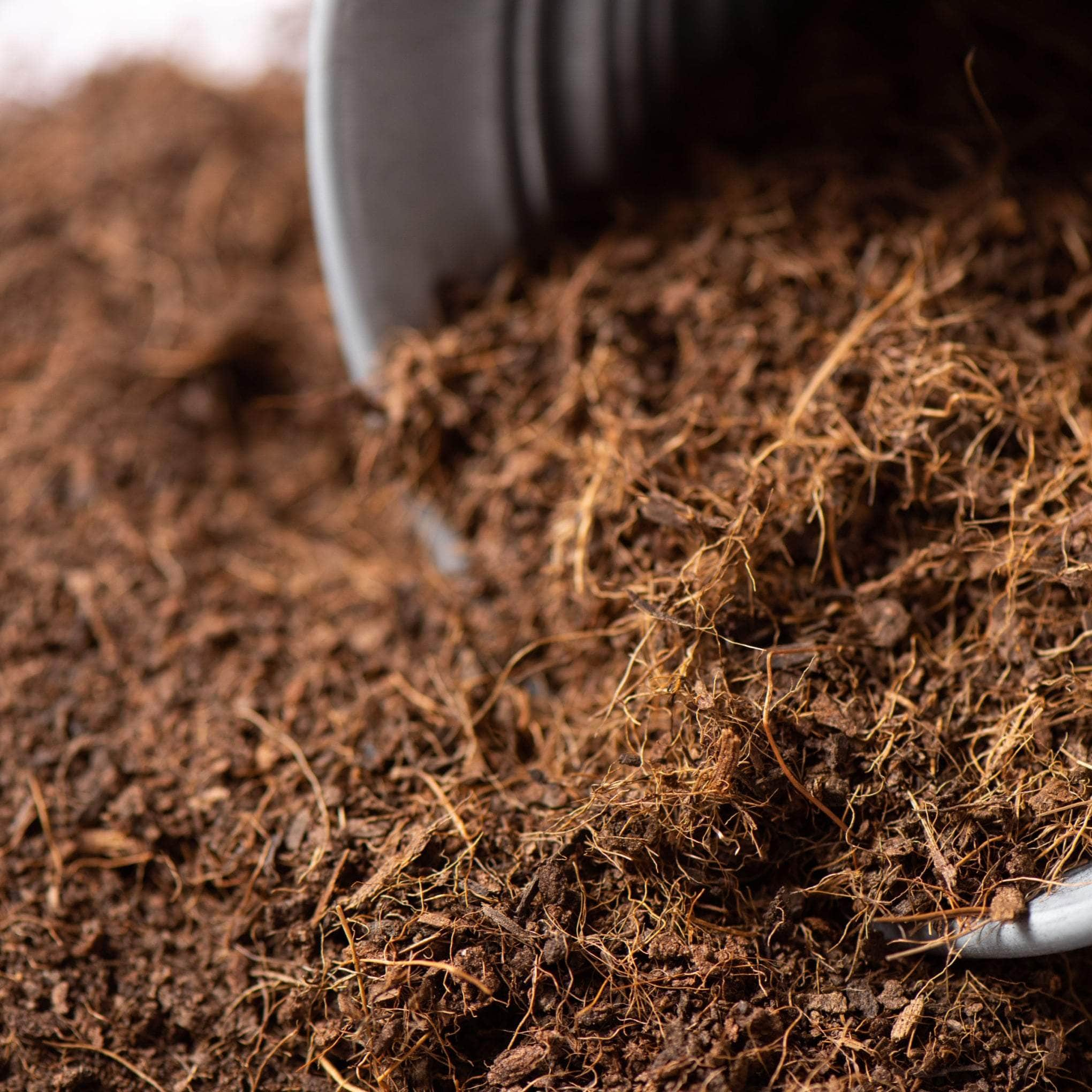A Step by Step Guide to Growing Onions
Welcome to our comprehensive guide on how to grow onions. Whether you're a seasoned gardener or a green thumb in the making, this guide will provide you with all the knowledge you need to cultivate a bountiful onion harvest. From understanding the basics of onion growth, to planting, caring, and finally harvesting your onions, we've got you covered.
Onions are a versatile and rewarding crop to grow. They can be grown from seed or from sets, small onions that have been heat-treated to prevent bolting. With the right conditions - full sun, fertile soil, and a good watering regime - you can expect a healthy yield of fresh onions from your vegetable garden.
But it's not just about planting and waiting. We'll delve into the importance of day length in onion growth, the role of crop rotation, and how to tackle common problems like white rot. So, whether you're growing red onions, short day onions, or any other variety, this guide is your one-stop resource.
Let's get started on your onion growing journey!
Understanding the Basics of Onion Growth

Growing onions can be a rewarding endeavour, but it requires a solid understanding of the basics of onion growth. This includes knowledge of the onion plant's lifecycle, the importance of day length in its growth, and the different types of onions, such as short day and long day onions.
By grasping these fundamental aspects, you can ensure a successful onion harvest, whether you're growing onions from seed or using another method. Let's delve into the fascinating world of onion growth and discover how to grow onions effectively.
The Lifecycle of an Onion Plant
Understanding the lifecycle of an onion plant is crucial to successfully growing onions. The journey starts when you plant an onion from seed. As the seed germinates, it sends up green shoots and roots begin to establish themselves in the soil.
During these early stages, the growing onion primarily focuses on building robust leafy foliage. These green leaves aren't just for show; in reality, they're working hard, absorbing sunlight and photosynthesising to store energy in the bulb - the part of the onion we're all interested in.
By mid-growth, onions divert their energy from leaf production to bulb enlargement. This critical transition is controlled by the length of the day: when daylight extends beyond a certain threshold, the onion bulb starts to swell.
At the end of the growth cycle, the bulb reaches maturity, and the plant's leaves begin to yellow and fall over. At this point, the grower can harvest the bulb. As onions are biennial, if left unhindered, they would produce flowers in their second year, spreading seeds for a new generation of onion plants.
So, growing onions takes patience and understanding but ultimately, when you pull that first plump bulb from the ground, you'll find it all worthwhile.
The Importance of Day Length in Onion Growth
Understanding the influence of day length in growing onions is crucial to garden success. Onions are unique as their bulb formation is triggered by changes in day length. Different types of onions have been categorised according to when they form bulbs, relative to the amount of daylight received.
Long day onions, suitable for northern gardens, begin bulb formation when day lengths reach 14-16 hours. Their layering complexity provides excellent storage properties and many have a strong, pungent flavour.
On the other hand, we have the short day onions. These types kickstart their bulb production when the light of day lasts for about 10-12 hours. Short day onions are sweet-flavoured and are best eaten fresh.
Also, intermediate onions deserve notable mention. Bulbing for these occurs at the 12-14 hour daylight mark. These onion variety fills the gap between short and long-day onions.
Clearly, to grow onions successfully, one needs to appreciate the significant role day length plays in onion growth. This understanding is pivotal to selecting and growing the right onion for your region. Review your latitude and choose the category of onion that corresponds with it. This way, you are not just growing onions, you are growing them right.
How to Plant Onions

Growing onions can be a rewarding experience, especially when you see the fruits of your labour in your kitchen. In this section, we will delve into the process of how to plant onions, covering everything from planting onion bulbs to sowing onion seeds and transplanting onion plants. Whether you're a seasoned gardener or a beginner, these tips will help you grow a healthy and bountiful onion crop.
Planting onions involves more than just putting the bulb in the ground. It's a process that requires careful planning, preparation, and execution. From choosing the right time to plant, selecting the ideal site, to understanding the correct spacing and depth, each step plays a crucial role in the success of your onion crop. Let's explore these steps in detail.
Planting Onion Bulbs: A Step-by-Step Guide
Planting onions is a balancing act: it requires both precision and care. Here's a quick guide on how to plant onions that will yield a substantial harvest.
Choose an Appropriate Time: Optimal planting times for onion sets are spring, ideally from mid-March to mid-April. However, certain varieties can also be planted in the autumn.
Select the Planting Site: Find a sunny spot with loose, well-draining soil. Sets should be gently pushed into the ground, leaving the tip visible at the surface.
Spacing: Arrange the sets approximately 2–4in (5–10cm) apart, in rows that are at least 10–12in (25–30cm) apart.
Firm the Soil: After placing the sets, firm the soil around them and water thoroughly. This helps them establish roots and aids in water absorption.
Cover with Fleece: Covering your newly planted sets with fleece will prevent birds from pecking them out of the ground. Ensure you remove this once they've securely rooted in.
Pro tip: If your soil is prone to waterlogging, consider planting your onion sets on modules indoors first. You can then transplant them outdoors in the spring. Be it in a container, or directly in the soil, planting onion bulbs, either from a set or seed, all play a part in how to plant onions successfully.
Sowing Onion Seeds: Tips and Techniques
To sow onion seeds like a pro, here are a few tips and techniques you can follow:
Choose the Right Time: Sowing onions usually begins in mid to late winter, though you can occasionally find overwintering or Japanese varieties for late summer sowing.
Set the Right Environment: Use peat-free seed compost in modular trays. Aim for one plant per module or if you want to save space, grow about three to four per module. This will give you more bulbs, though possibly smaller in size.
Place Correctly: Once your modular trays are set up, place them in a heated propagator or on a warm sunny windowsill at a temperature of 10–16°C. This welcoming environment encourages sprouting.
Keep Compost Moist: It's crucial to remember the compost must be kept moist. Seedlings usually emerge within a couple of weeks. They should then be exposed to bright light.
Growing onions from seeds might seem challenging initially. But, once you get the hang of understanding their needs - right from when to sow, how to set the environment, maintaining moisture levels, and eventually transferring them outdoors – it becomes an incredibly rewarding process. So, ready to give it a go in your vegetable garden this season?
Transplanting Onion Plants: When and How
Transplanting onions is a practice favoured by many seasoned gardeners. It tends to offer a more reliable outcome than sets and allows for a larger variety of cultivars to be grown. Furthermore, onion transplants offer a fast solution for budding growers as they are less likely to succumb to bolting.
When conditions are congenial, which is typically when the soil temperature reaches 10˚C, you can introduce transplants or onion sets to the garden. This usually coincides around 4-6 weeks prior to the average last frost in spring.
Preparation is key. Fortify the planting bed with suitable plant food, and modify the soil with organic matter that has been thoroughly composted. For those with heavier soils, a mounded row, or 'furrow', can aid in better drainage.
In terms of how deep to plant, aim for 1 to 1½ inches. Arrange them in rows, leaving 12 to 18 inches between each row. Place each transplant about 4 inches apart, within each row.
Consistent watering is also essential post-planting. As spring advances, remember to continue with regular irrigation and engage in gentle weeding as necessary. This thorough care of your transplants will result in healthy, mature onions ready for harvesting when the bulb is large and the tops start to turn yellow and fall over.
Caring for Your Growing Onions

Caring for your growing onions is a task that requires a blend of knowledge, patience, and a keen eye for detail. It's not just about planting and watering; it's about understanding the needs of your onions and providing them with the right conditions to thrive. From ensuring they get full sun to maintaining fertile soil rich in organic matter, every step plays a crucial role in your onion's journey from seed to bulb.
Moreover, it's about being proactive in preventing common problems that can hinder their growth, such as onion bolt, and understanding the importance of practices like crop rotation. So, let's delve into the world of onion care and explore how you can nurture your onions to their full potential.
Providing the Right Conditions for Onion Growth
Onions are not overly demanding plants, but they do require careful attention to create an environment in which they can truly flourish. They are sun lovers, so ensure that you pick a site that offers full sun for optimal growth.
When it comes to soil, onions thrive in fertile loam that's rich in organic matter. Make a habit of enriching your onion beds with a layer of compost before planting. This not only nourishes your onions but also aids in soil drainage, a critical factor for these root bulbs.
Moisture is crucial. Like most plants, onions need watering, but they don't like soggy conditions. A damp, well-drained soil offers the necessary moisture without waterlogging the roots, which could cause rot and other problems.
It's also worth noting that onions appreciate a pH range between 6 and 7. Test your soil, and adjust the pH as needed. You may need to lime your soil if it's overly acidic.
Preventing and Solving Common Onion Growing Problems
Onions, while generally low maintenance, can encounter certain issues that hinder growth. Here are some common problems faced when growing onions and solutions to combat them:
Bolting: Often triggered by temperature fluctuations, this leads to premature flowering and diminished bulb development. Avoid bolting by planting at the appropriate times and ensuring onion transplants aren't larger than a pencil, and onion sets are less than an inch in diameter.
Birds pulling up sets: Newly planted onion sets can become a target for pesky birds. To deter them, consider covering your crop with fleece until the onions root in.
Thrips and Onion Maggots: Both of these pests can cause significant damage to your onions. Thrips, tan-coloured insects, can be dealt with using insecticidal soap. Prevent maggot infestations by maintaining a clean growing area, free of decaying organic matter, and consider using fine mesh netting at the base of your plants.
White Rot: This virulent disease causes yellowing and wilting of foliage, and fluffy white fungal growth on the bulb. There's no solution once rot sets in, so prevention is crucial. Avoid using soil-based compost and buy seed from inspected producers. Once rot is detected, rotate the crop location to avoid soil contamination.
By proactively addressing these issues, you'll be well on your way to a healthy and bountiful onion harvest. Should any trouble arise, remember: prevention is often the best medicine when it comes to giving your onions the care they need.
The Role of Crop Rotation in Onion Cultivation
In the journey of growing onions, crop rotation plays an influential role. A simple yet effective method, it involves planting onions in different sections of the garden each year. So, why is this technique so beneficial? Firstly, it helps to keep common problems such as onion bolt and infections at bay.
By allotting a new area of your garden every year for onion cultivation, the chances of disease-carrying pests like onion maggots finding their next onion feast become significantly reduced. Essentially, you're running your very own game of "hide and seek", leaving the pests confused and your onions, safe.
The secret to crop rotation effectiveness lies in preventing dependency on a single plot of fertile soil. Overuse of a patch can lead to nutrient depletion over time. By rotating crops, we can ensure the soil recovers and stays fit for future cultivation.
At the same time, it's crucial to prepare your garden bed with a garden fork for your next round of onion growth. A good pronging helps to aerate compacted soil, encouraging healthy root development and allowing your plants to access nutrients more easily.
Above all, remember that a well-executed crop rotation involves planning. It falls upon you, the master onion grower, to study patterns, observe growth, and strategically plan the next season's growth section. With some patience and focused care, your onions will be free of common problems and yield a healthy produce. Happy onion growing!
Harvesting and Storing Onions

In the journey of growing onions, the final and crucial stages are harvesting and storing. These steps are pivotal in ensuring that your hard work pays off, and you get to enjoy fresh onions for a longer period. This section will guide you through the best practices for harvesting onions and the most effective storage methods to keep your onions in perfect condition. Whether you're harvesting in early summer or late summer, these tips will ensure you get the most out of your onion bulbs.
When and How to Harvest Onions
The complex yet rewarding process of harvesting onions starts with recognising the right time and utilising the appropriate tools. Here are the detailed steps for a perfect onion harvest:
Watch the Tops: Begin when one half to three quarters of the plant tops fall over. The tops falling over or turning brown is an indication of the onion's maturity, typically happening in the late summer or early autumn.
Dig Correctly: Use a garden fork or spading fork to dig beneath the onions. Carefully loosen the soil to avoid damaging the onions as this may affect their storability. Also, try not to yank the leaves during this stage.
Lift out with Care: Extract onions by cunningly navigating around the outside to make the removal process easier. This should give you a bulb ready for the final stages of its journey.
Curing Phase: Leave the harvested onions in a warm, well-ventilated spot for two to four weeks for curing. The aim here is to allow the outer layers of the bulb to dry and the neck to tighten.
Onions harvested in early summer are usually autumn-planted, while those harvested in late summer are spring-planted. Be sure to harvest before the foliage fully browns and dies down. Prove your green thumb by getting your harvesting process right; a bountiful yield of fresh onions awaits you!
Storing Onions: Methods and Tips
Use a Garden Fork: To prepare your onions for storage, use a garden fork to lightly lift them out of the soil. This allows the roots and stem to dry and become papery. Avoid bruising the onions during this process as they're more prone to rotting.
Dry Your Onions: After harvesting with a garden fork, dry your onions for about two weeks. This process can be quickened if the weather is hot and dry. You can place them on a rack to let air circulate around them, or if the weather is damp, put them in a sunny greenhouse or a well-ventilated shed.
Check Your Onions Regularly: Make sure to regularly inspect your onions during storage. Any soft or mouldy onions should be removed promptly to avoid infecting the others.
Proper Storage Method: Onions should be stored in a light, cool, dry, and well-ventilated place. You can put them in net bags, trays, or tie them into plaits and hang up.
Do Not Store in Dark: Storing onions in the dark can stimulate sprouting. By keeping them in a well-lit environment, you help deter the growth of sprouts, maintaining the onions in their perfect condition.
With these tips, whether your onions are harvested from late spring to late summer, they should remain fresh and lasting for your culinary needs.
Understanding Onion Pests and Diseases

Growing onions can be a rewarding experience, but it's not without its challenges. One of the most common problems that gardeners face is dealing with pests and diseases that can affect the health and yield of their onion plants. Understanding these issues is the first step towards effective management and prevention.
In this section, we'll delve into the world of onion pests and diseases, exploring the most common culprits that can hinder your onion cultivation efforts. From the pesky onion thrips to the destructive white rot, we'll provide insights into their identification and management. Armed with this knowledge, you'll be better equipped to protect your onion plants and ensure a bountiful harvest.
Common Pests Affecting Onion Plants
Onion Thrips: These tiny culprits have a knack for leaving the onions with a silvery hue, thanks to their insatiable feeding on foliage. They usually hide in weedy areas or unfetched onion bulbs during the winters. Cleanliness is your tool against them.
Onion Maggots: Often found feeding on roots and onion bulb, these pests can cause the onions to decay while in storage. Undecomposed organic matter attracts them. Therefore, avoiding the use of fresh manure and sticking to composted organic materials in the soil is advisable.
Birds: They have a penchant for upending newly planted onion sets. To guard against this destruction, consider covering the sets with horticultural fleece.
Onion Fly Larvae: Detected through sagging yellow foliage, these pests are, unfortunately, usually found relishing the bulb by the time you notice any damages. Using fleece cover and companionship planting of parsley alongside onion can help.
Onion Pests in General: Interestingly, onions themselves can be a good defence against pests due to their strong odour. Pairing onions with plants like broccoli, kale, or lettuce can help deter pests like cabbage worms, aphids, and Japanese beetles.
Common Diseases in Onion Cultivation and Their Management
White Rot: This is a notorious disease often infecting onion plants. Characterised by a white, fluffy fungal growth at the base of the bulb, it leads to yellowing and wilting of the leaves. Avoid soil-based compost and only use seeds and bulbs from inspected sources to prevent it.
Leek Rust: This fungus affects alliums like onions. It causes orange pustules on the leaves which can hinder photosynthesis and impact bulb growth. To suppress it, good hygiene practices and crop rotation are effective measures.
Onion Bolting: This refers to premature flowering in onion plants. It occurs mostly due to temperature fluctuations, draining energy away from the bulb production. Plant at the right time and use onion sets no larger than an inch to avert bolting.
Allium Leaf Miner: These pests cause distinctive lines of white dots on leaves, eventually leading to wilting. Covering crops and reducing mulch can serve as preventive measures.
Tackling onion diseases primarily depends on robust preventative measures and responsive management practices. Happy gardening!
Exploring Different Onion Varieties

In the world of gardening, the onion holds a special place. This humble vegetable, with its many layers, is not as simple as it seems. There are countless onion varieties, each with its own unique characteristics, flavours, and growing requirements. In this section, we will delve into the fascinating world of onion varieties, exploring the differences between short day and long day onions, and the unique traits of each type. Whether you're a seasoned gardener or a beginner, understanding these differences can help you choose the right onion variety for your garden. So, let's embark on this journey of discovery, peeling back the layers of the onion world.
Short Day Onions: Varieties and Characteristics
When it comes to onion varieties tailor-made for specific growing conditions, one type stands out - the short day onions. This unique onion type accounts for its growing trend in certain climates and seasons and the adaptability is worth noting.
Climate and Geographical Suitability: Short day onions are applauded for their embracement of less daylight, bulbing at around 10-12 hours of exposure. These are likely to thrive between 25 to 35 degrees latitudes, which perfectly suits southern gardens. However, for the northern regions, these onion varieties might be a bit disappointing, as they bulb too early, restricting the growth to a mature size.
Flavour Profile: The flavour attributed to these onions is mildly sweet, which makes them ideal for fresh consumption. While being a delight to the taste buds, they may not offer the same level of pungency often associated with their long-day counterparts.
Pearl Onions: Talk about variations of short day onions; the pearl onions deserve a special mention. They are grown under long-day summer conditions, usually up north, at high densities. Their early bulb formation results in the creation of attractive, small, specialty onions.
Green Onions: Another interesting variety is the green onions or scallions. Harvested young, they offer a flavourful addition to your dishes. They could be yellow, red, or white onions and are primarily harvested as a method to allow space for the rest of the crop.
Aggregatum group: This includes shallots and potato onions, stand as unique groups bred over centuries. They produce clumps of smaller bulbs rather than one large bulb, adding to the pool of variations within short day onions.
Exploring the vast array of short-day onions opens up a world of flavour profiles, growth patterns, and unique characteristics. Choosing the best one for your garden largely depends on your geographical location and the climate it offers. Happy Planting!
Long Day Onions: Varieties and Characteristics
Long day onions, aptly named for their need for around 14 to 16 hours of sunlight to trigger bulb formation, are an intriguing type of onion to grow. Best suited for latitudes between 37° and 47°, these onions thrive particularly in Northern regions. A unique characteristic of long day onions is their excellent storage quality, and they're known for their robust, pungent flavour that adds a distinct taste in various culinary preparations.
Among the wide variety of long day onions, certain varieties have garnered popularity with seasoned growers. The 'Yellow Sweet Spanish’ is renowned for its large, rounded shape and yellow-white hue. Another variety is the 'Red Wethersfield’, known for its flat bulbs, white flesh, and red skin. If you're after early yield, the 'Buffalo,’ and 'Norstar' are worth considering, although they may not last beyond late December.
Growers seeking heirloom varieties can opt for 'Red Florence'. It boasts of a dark purple-red torpedo shape and a mild, sweet flavour. The 'Ailsa Craig' variety, named after a Scottish island, is remarkable for its size. The bulbs can reach up to 8 inches in diameter, yielding a mild and sweet flavour. Lastly, if you fancy a pungent flavour that sweetens with cooking, the 'Gold Coin' might be your top pick. This cipollini type of onion typically yields a 1 1/2- to 3-inch yellow flattened bulb.
Final Thoughts on Growing Onions

Growing onions can be a rewarding experience, whether you're a seasoned gardener or a beginner. The process, from planting onion bulbs or sowing onion seeds, to harvesting fresh onions, is a journey that can teach you a lot about patience, care, and the beauty of nature.
Remember, the key to a successful onion crop lies in understanding the basics of onion growth, providing the right conditions, and being vigilant about common problems. Whether you choose to grow from sets or seeds, or whether you prefer red onions or white, the joy of seeing your onions grow from tiny bulbs to full-sized vegetables is unparalleled.
In conclusion, growing onions is not just about the end product. It's about the journey, the learning, and the satisfaction of nurturing something from a seed or a small bulb to a fully grown plant.
So, get your garden forks ready, prepare your fertile soil, and embark on your onion-growing adventure. Happy gardening!










